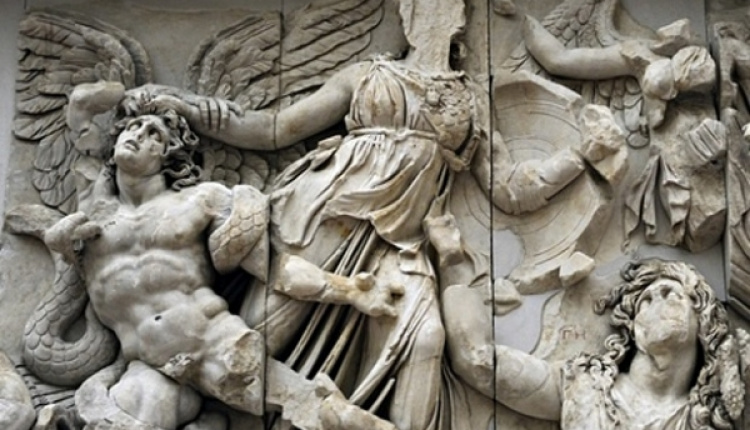Top Ancient Greek Artworks
- by XpatAthens
- Monday, 22 February 2016

From rare bronzes found in the sea to goddesses that proved a millennium ahead of their time, ancient Greek art is majestic, vital and full of high drama. Here are some of the most important works from ancient Greece:
Fallen Warrior from Temple of Aphain (c 480-470 BC)
There is a tragic pathos to this mighty sculpture of a dying hero from a temple on the Greek island of Aegina. Tragedy is a Greek concept. The tragedies of Sophocles, Euripides and Aeschylus are still performed. This statue shows a strong man fallen, heroic to his last breath.
The Pergamon altar (180-160BC)
Classical Greek art changed rapidly as Greece itself went through wars and imperial transformations. In what is called the Hellenistic age it became much more emotional, sensual and even sensationalist. The furious sculptures on the Pergamon altar – which can be seen in its own museum in Berlin – are full of passion and psychological drama.
The Riace bronzes (460-420BC)
These tremendous statues found in the sea off southern Italy in 1972 are important because so few original Greek bronze statues survive. Most of the classical nudes in museums were carved in marble in the Roman era, as reproductions of such rare, and now largely lost, originals. Here we see the true majesty of Greek art in its classical age, which occured in the fifth-century B.C.
These tremendous statues found in the sea off southern Italy in 1972 are important because so few original Greek bronze statues survive. Most of the classical nudes in museums were carved in marble in the Roman era, as reproductions of such rare, and now largely lost, originals. Here we see the true majesty of Greek art in its classical age, which occured in the fifth-century B.C.
Goddesses from the east pediment of the Parthenon (c 438-432BC)
Sitting and reclining in graceful unison, these goddesses carved in marble for the Parthenon in Athens are among the most beautiful and mysterious images of human form ever created. Incredibly, the artist makes the draperies that cover their bodies as real and richly textured as similar garments painted by Leonardo da Vinci a millennium later - and who didn't have to produce his illusions in stone. These are dream goddesses.
Sitting and reclining in graceful unison, these goddesses carved in marble for the Parthenon in Athens are among the most beautiful and mysterious images of human form ever created. Incredibly, the artist makes the draperies that cover their bodies as real and richly textured as similar garments painted by Leonardo da Vinci a millennium later - and who didn't have to produce his illusions in stone. These are dream goddesses.
The Dionysus Cup by Exekias (c540BC)
Dionysus, god of wine and madness, sails on his boat, surrounded by dolphins, in this delightful painting. Part of the fascination of Greek art is that its themes were taken up by artists down the centuries, as the myths of this culture were constantly being rediscovered. So this image of Dionysus can be compared with later portrayals of the wine god by Titian, Michelangelo, or Cy Twombly.
To read more, please visit: The Guardian
To read more, please visit: The Guardian



